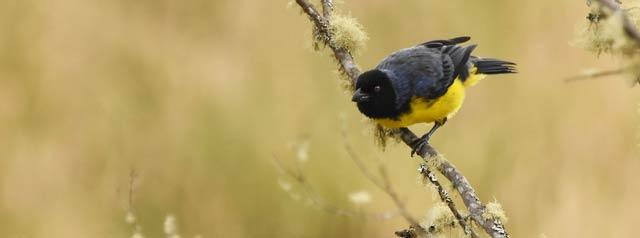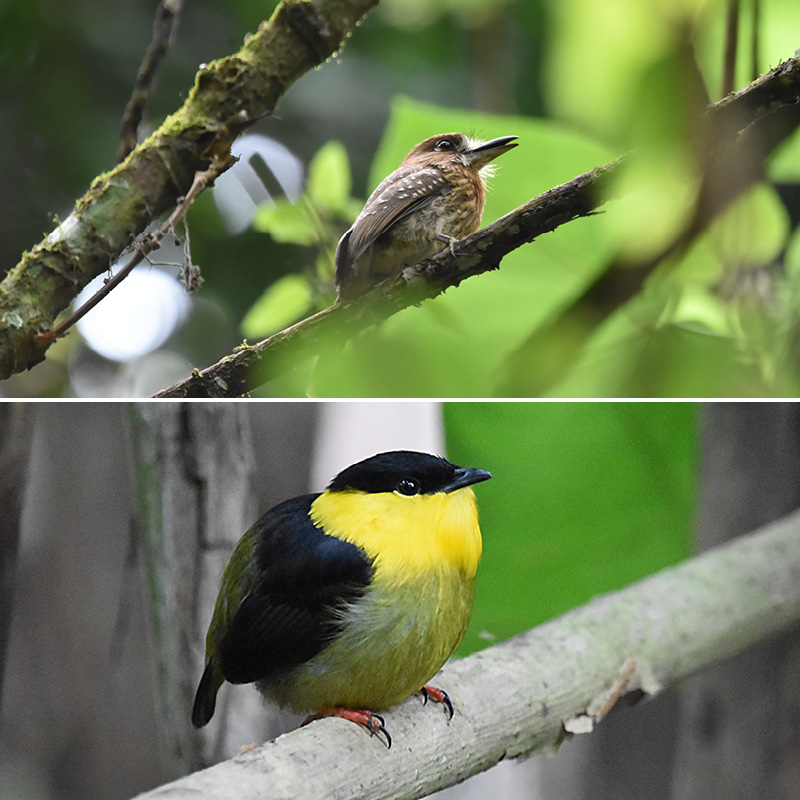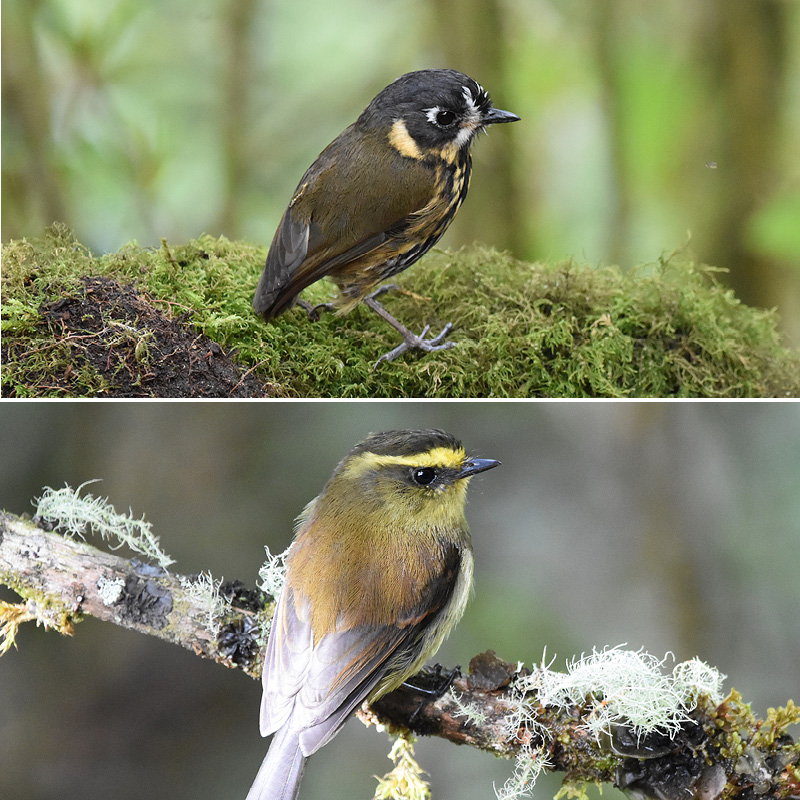The Holbrook Explorer

Back From the Field: Birding the Cauca Valley and the Central Andes
Back From the Field: Birding the Cauca Valley and the Central Andes
Guest Post by Kendell Loyd
As a high school biology teacher and birder, my favorite way to spend my spring break each year is traveling with friends to see new birds. Last March, I got just the chance on a 9-day birding trip to Colombia with Holbrook Travel, focusing on the Cauca Valley and the western slope of the Central Andean Range. The journey was packed with exceptional bird sightings, particularly the rare and endemic. Our itinerary was a perfect mix of diverse habitats, from cloud forests to the páramo ecosystem, and we encountered some of the most unique species on Earth.
 Great Thrush, Kendell Loyd, and Rufous-crowned Tody-flycatcher ; photos by Kendell Loyd and Jill Hays
Great Thrush, Kendell Loyd, and Rufous-crowned Tody-flycatcher ; photos by Kendell Loyd and Jill Hays
We began in Pereira, a bustling city nestled in the foothills of the Central Andes, famous for its coffee production. Exploring the gardens of the Sonesta Hotel, we got our first views of Colombia’s bird life, including Black-throated Mango, Striated Heron, Ringed Kingfisher, Bar-crested Antshrike, Blue-necked Tanager, Guira Tanager, and Saffron Finch. The first location we visited outside the city was Santuario de Flora y Fauna Otún Quimbaya, where we were greeted by the clattering wing-displays of Sickle-winged Guans. Walking along the Otún River, we were overwhelmed by mixed-species flocks consisting of birds that were entirely new to us: Rufous-breasted Flycatcher, Marble-faced Bristle-Tyrant, Golden-faced Tyrannulet, Olive-backed Woodcreeper, Montane Foliage-gleaner, Red-faced Spinetail, Golden Tanager, and the unbelievable Multicolored Tanager. However, occasionally mixed in were what seemed like old friends, Blackburnian Warbler, Black-and-white Warbler, Canada Warbler, and Summer Tanager, as these species breed in North America and winter in the Andes. As we slowly walked, Red-ruffed Fruitcrows perched in the trees, White-collared Swifts flew overhead, and the enticing songs of Chestnut-bellied Wrens rang from the dark underbrush. In this pristine place, we also encountered the endangered and incredibly range-restricted Cauca Guan, which is slowly recovering from near-extinction due to overhunting.
 Group photo, Cauca Guan; photos by Jill Hays and Kendell Loyd
Group photo, Cauca Guan; photos by Jill Hays and Kendell Loyd
Our next stop was La Finca El Cortaderal. At nearly 10,000 ft, this area of cloud forest is a patchwork of grassy fields and areas of stunted trees. It was formerly home to the Indigo-winged Parrot, which had gone extinct in the early 1900s. However, a small population was discovered here still hanging on in 2002. The area was immediately protected, nest boxes were installed to encourage breeding, and the parrots’ population has slowly increased. We were fortunate enough to see one. In addition to Indigo-winged Parrot, species like Barred Parakeet, Speckle-faced Parrot, and Scaly-naped Parrot were common. We walked the dirt road spotting new species as we went: Azara’s Spinetail, Cinnamon Flycatcher, Agile Tit-Tyrant, Rufous-breasted Chat-Tyrant, Hooded Siskin, Grass-green Tanager, and the stunning Crimson-mantled Woodpecker. The hummingbirds easily stole my attention with their charismatic names and their eye-catching colors: Tourmaline Sunangel, Long-tailed Sylph, Purple-backed Thornbill, Tyrian Metaltail, Mountain Velvetbreast, and the awe-inspiring Sword-billed Hummingbird.
 Sword-billed Hummingbird, Crimson-mantled Woodpecker, and Long-tailed Sylph; photos by Kendell Loyd
Sword-billed Hummingbird, Crimson-mantled Woodpecker, and Long-tailed Sylph; photos by Kendell Loyd
The next leg of the journey led us to the El Color de Mis Rêves tented camp, a private nature reserve in the lower cloud forest. Immediately we saw an elaborate set-up of hummingbird feeders, which were being well-guarded by a swarm of Buff-tailed Coronets. However, occasionally other species like Sparkling Violetear, Tourmaline Sunangel, Long-tailed Sylph, Collared Inca, Tyrian Metaltail, and Mountain Velvetbreast managed to sneak in. Smaller species, like White-bellied Woodstar, fed on flowers around the periphery, avoiding the drama of the feeders. The focal point here was the feeding station where we witnessed the shy and cautious Bicolored Antpitta in the open. As we were leaving, we noticed a dark silhouette soaring high above us: a rare and highly endangered Black-and-chestnut Eagle. This mountainous raptor likely has fewer than 1500 individuals left in the wild.
 Sparkling Violetear, Hooded Mountain Tanager, Buff-tailed Coronets, and Bicolored Antpitta; photos by Kendell Loyd
Sparkling Violetear, Hooded Mountain Tanager, Buff-tailed Coronets, and Bicolored Antpitta; photos by Kendell Loyd
At the Tinamú Lodge, we enjoyed an array of birds. Just around the buildings, Spectacled Parrotlets foraged in the mossy roof tiles, a Southern House Wren fed her chicks inside the railing by my room, and a stunning male Crimson-backed Tanager appeared at the edge of the dining area. The trails around the lodge produced elusive Gray-headed Doves, Common Potoo, Striped Cuckoos, multiple adorably named Moustached Puffbirds, and shocking views of displaying male Golden-collared Manakins. Even walking the road here delivered amazing species: Smooth-billed Ani, Spot-breasted Woodpecker, Brown-throated Parakeet, White-shouldered Tanager, Bay-headed Tanager, and Ruddy-breasted Seedeater.
 Moustached Puffbird and Golden-collared Manakin; photos by Kendell Loyd
Moustached Puffbird and Golden-collared Manakin; photos by Kendell Loyd
Our adventure then took us to la Reserva Ecológica Río Blanco, a forest preserve with feeders visited by a dozen species of hummingbird, three different antpitta feeding stations, and a wide array of species that we had not seen anywhere else. My favorite birds here were Andean Guan, Masked Trogon, Black-billed Mountain-Toucan, Chestnut-crowned Antpitta, Brown-banded Antpitta, Slate-crowned Antpitta, Green-and-black Fruiteater, Beryl-spangled Tanager, and an entire flock of White-capped Tanager.
 Andean Guan, Green-and-black Fruiteater, and White-capped Tanager; photos by Kendell Loyd
Andean Guan, Green-and-black Fruiteater, and White-capped Tanager; photos by Kendell Loyd
From Río Blanco, we ascended to Hotel Termales del Ruiz, a breathtaking hot spring resort at over 10,000 feet. The area was rich with high-altitude species hummingbirds like Rainbow-bearded Thornbill, Purple-backed Thornbill, Golden-breasted Puffleg, Black-thighed Puffleg, Viridian Metaltail, Shining Sunbeam, and Great Sapphirewing. Scarlet-bellied and Lacrimose Mountain-Tanager came to the fruit feeders, and Equatorial and Tawny Antpitta called from the surrounding area. From here, we went higher to el Parque Nacional Natural Los Nevados into the páramo habitat, an amazing scrubland habitat above the treeline. With the glacier-laiden peak in the distance, this single mountain is home to the endangered Buffy Helmetcrest, a large tan hummingbird with a tiny bill, tall crest, and green and purple beard. We sought out other high-altitude targets as well: Andean Teal, Andean Duck, Noble Snipe, Andean Lapwing, Black-chested Buzzard-Eagle, Paramo Tapaculo, Stout-billed Cinclodes, Many-striped Canastero, Golden-crowned Tanager, and Black-backed Bush Tanager.
 Scarlet-bellied Mountain Tanager, Andean Lapwing, and Buffy Helmetcrest; photos by Kendell Loyd
Scarlet-bellied Mountain Tanager, Andean Lapwing, and Buffy Helmetcrest; photos by Kendell Loyd
Our final stop was Hacienda El Bosque, where we had a relaxed day watching Sparkling Violetear, Shining Sunbeam, and Sword-billed Hummingbird at the feeders, as well as a covey of White-throated Quail-Dove. Stealing the show, however, we were privileged to be visited by a small and adorable Crescent-faced Antpitta.
 Crescent-faced Antpitta and Yellow-bellied Chat-tyrant; photos by Kendell Loyd
Crescent-faced Antpitta and Yellow-bellied Chat-tyrant; photos by Kendell Loyd
This trip was a dream come true, filled with rare and endangered species, stunning landscapes, and remarkable birding opportunities. Thanks to the expert guidance of Jill Hays and Holbrook Travel, I experienced a once-in-a-lifetime adventure that I will cherish forever. The food, the people, the accommodations, and, most importantly, the birds, were all spectacular. It was a journey that reaffirmed the importance of conservation within myself and the joy of discovering new species and new friends in one of the world’s most biodiverse regions.
Here is a link to my trip report on eBird:
https://ebird.org/tripreport/210341
 Golden-fronted Redstart, Spectacled Parakeet, and Acadian flycatcher; photos by Kendell Loyd
Golden-fronted Redstart, Spectacled Parakeet, and Acadian flycatcher; photos by Kendell Loyd

